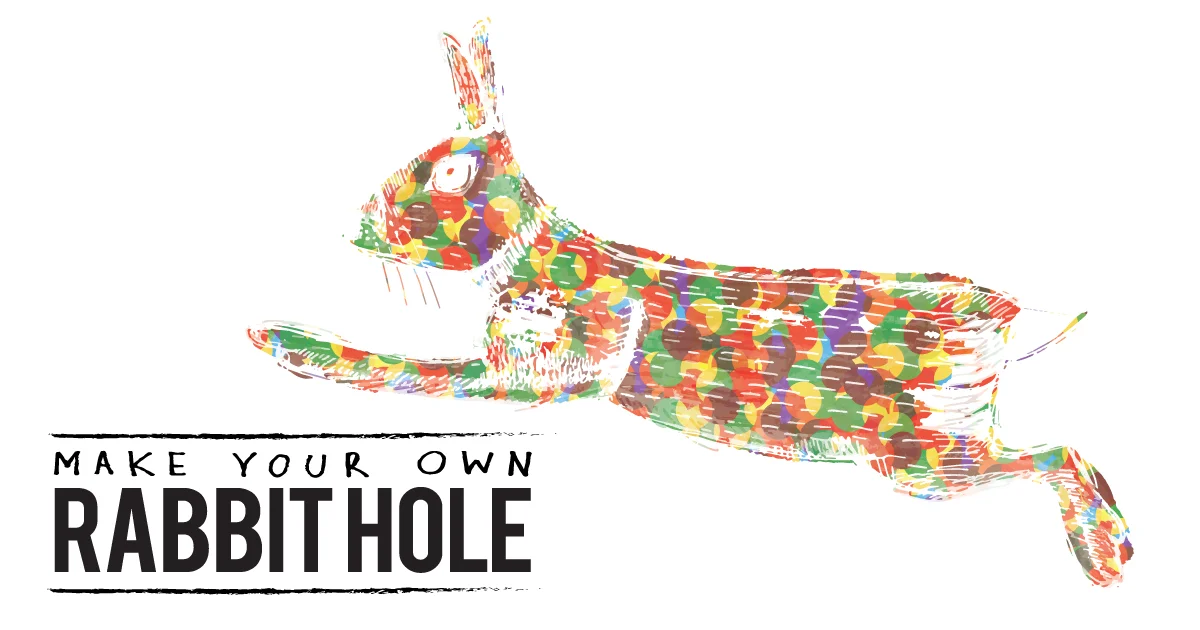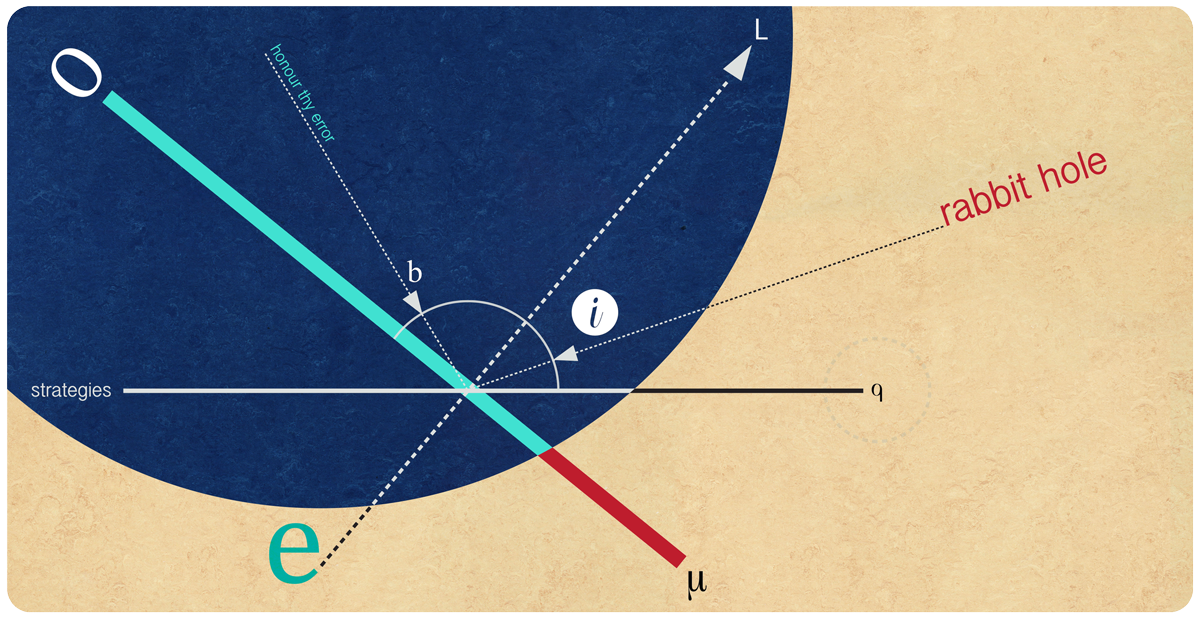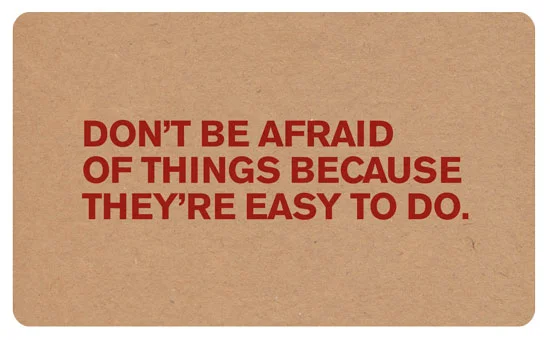Oblique strategies for artists with acute dilemmas
/Words and cover art by Ant Gray
Looking at a world of possibilities in the early stages of making something, it’s sometimes hard to know which direction to take things in. So composer and producer Brian Eno and painter Peter Schmidt developed a series of cards to help artists break through their creative blocks and take risks in their work.
Creative freedom is often considered essential for any artist. But complete freedom can be a curse for the indecisive.
‘Is this good, or is it rubbish?,’ we wonder. ‘Is it worth keeping going this way, or should I try something different?’ Or maybe we’re stuck in a rut—like someone lost in the desert with one leg shorter than the other, forever circling the same well-worn places.
Sometimes the best thing for an artist is not to be free but to be constrained. “Any constraint,” says composer and producer Brian Eno, “is part of the skeleton that you build the composition on, including your own incompetence.”
That’s why Peter Schmidt and Brian Eno’s Oblique Strategies are so intriguing. The two published their first deck in 1975, marketing it as presenting any artist with “over one hundred worthwhile dilemmas” to work with.
Oblique Strategies are a series of cards, each with a random suggestion to apply to whatever project you are working on. Each card represents not just a suggestion, but also a constraint.
“On each card is printed an (often quite abstract) instruction,” explains critic David McNamee, “which is invoked when an artist, producer or band has reached some form of creative impasse and requires external disruptive influence to suggest new ideas.”
And it’s this ‘external disruptive influence’ that makes Oblique Strategies so useful, especially for those of us who have an intrusive internal voice that spoils or causes us to lose faith in what we are doing.
The 'strategies' can be used as a series of singular imperatives to encourage you to either continue, break, change, disassemble and rearrange any project.
As researchers Michael Biskjaer, Peter Dalsgaard, Kim Halskov explain, the benefit of these cards compared to other creative, impasse-breaking techniques like brainstorming or other forms of self-reflection is that they provide “forced inspiration in a decidedly provocative and allusive manner as a vehicle of divergence.”
“This means that the element of concrete inspiration is there,” they write, “in tangible form be it paper or on-screen,” essentially forcing the artist to act. They also argue this promotes ‘transcendence’ (meaning taking an innovative approach) over ‘tradition’ (keeping on the usual track).
Eno used the cards when producing some of the most standout albums of the 70s and 80s—when working on his own albums, and when collaborating with Talking Heads, Devo and on David Bowie’s Berlin series Low, Heroes and Lodger.
The genesis for the idea came earlier—from Eno and Schmidt’s experiments in art school. Without knowing it, they were working along the same lines independently from each another.
“When I was at art school,” explains Eno in a 1978 interview, “I started making programs or devices to extricate myself from rapt situations while I was painting.”
Peter Schmidt and Brian Eno
“You often find yourself in a situation where your focus on detail is so concentrated that your actual overview of the whole disappears and you’ve lost any possibility of stepping outside and seeing it as a complete thing. The idea of Oblique Strategies was just to dislocate my vision for a while. By means of performing a task that might seem absurd in relation to the picture, one can suddenly come at it from a tangent and possibly reassess it.”
Schmidt, who attended the same school, had been experimenting in a similar fashion. When the two showed each other the provocations they had been working with, they were surprised how many of them were the same or very similar. Seeing the creative possibilities, they combined their efforts, developed more prompts and eventually published a limited run of the cards.
'Getting something to happen'
For Eno, Oblique Strategies are not part of an idle game to be played for fun; they are a serious tool to be used in high-stakes situations.
“I’ve used them on nearly every record I’ve made,” he said.
“The kind of panic situation you get into in the studio is unreal. It doesn’t always profit the music. You’ve got until eight o’clock and you’ve got to get something finished. You tend to proceed in a very linear fashion. Now if that line isn’t going in the right direction, no matter how hard you work you’re not going to get anywhere. The function of the cards was to constantly question whether that direction was correct.”
Eno divides his creative process into two phases. The first phase includes “getting something to happen, where all the input comes from me,” he says, “where all the input comes from me.”
“During the first phase you often find that you come to a full stop. You don’t know what to supply. And it’s at that stage that I will pull one of the cards out.”
The second phase is easier. This is “where things start to combine in a way that wasn’t expected or predicted by what I supplied,” Eno says. “Once phase two begins everything is okay, because then the work starts to dictate its own terms. It starts to get an identity which demands certain future moves.”
This is why Schmidt and Eno’s Oblique Strategies can be useful. To work the way Eno does requires a certain ego-less disengagement from the creative process, of getting out of your own way, and the cards seem to certainly help with that.
“The genius of Eno is in removing the idea of genius,” writes American music critic Sasha Frere-Jones,
“His work is rooted in the power of collaboration within systems: instructions, rules, and self-imposed limits. His methods are a rebuke to the assumption that a project can be powered by one person’s intent, or that intent is even worth worrying about.”
The more we strip ourselves away and accept what is unfolding on the canvas, on tape, or on the page, the bolder and more interesting and original the resulting work becomes.
And that includes magic moment of our own productive incompetence.
This sentiment also seems to reside in one of my favourite Oblique Strategies cards.





















Painter Tracey Read talks about spending four weeks painting and drawing her way around Italy.